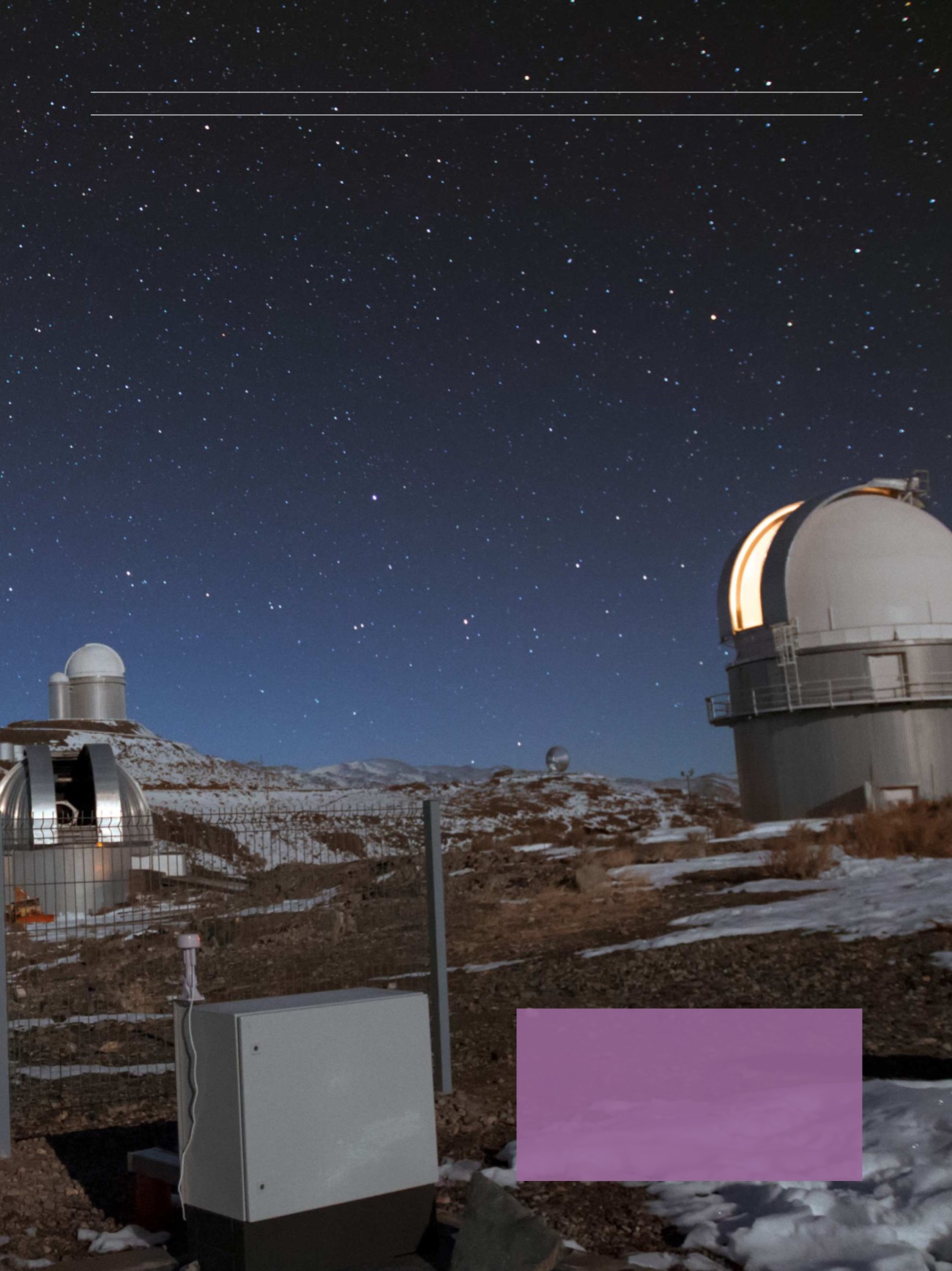

29
SPACE CHRONICLES
tery of cameras in a temperature-
controlled enclosure which will mon-
itor almost the entire sky visible
from its location. MASCARA can
monitor stars down to about magni-
tude 8.4 — roughly ten times fainter
than can be seen with the naked eye
on a clear dark night. Due to its de-
sign, MASCARA is less sensitive to
weather condition than other ob-
serving instruments, and so observa-
tions may be made even when the
sky is partially cloudy, thus extend-
ing observation times.
“Stations are
needed in both the northern and
southern hemisphere to obtain all-
sky coverage,”
says Ignas Snellen, of
Leiden University and the MASCARA
project lead.
“With the second sta-
tion at La Silla now in place, we can
monitor almost all the brighter stars
over the entire sky.”
Built by Leiden University in the
Netherlands, MASCARA is a planet-
hunting instrument. Its very com-
pact and low-cost design appears
unassuming, but is innovative, flex-
ible and highly reliable. Consisting
of five digital cameras with off-the-
shelf components, this small planet-
T
he MASCARA (Multi-site All-Sky CAmeRA) station
at ESO’s La Silla Observatory in Chile achieved first
light in July 2017. This new facility will seek out transit-
ing exoplanets as they pass in front of their bright par-
ent stars and create a catalogue of targets for future
exoplanet characterisation observations. This nighttime
view shows MASCARA in the foreground and other tele-
scopes at the La Silla Observatory in the background,
stretching up to the ESO 3.6-metre telescope that ap-
pears on the horizon. [ESO/G. Otten and G. J. Talens]
















